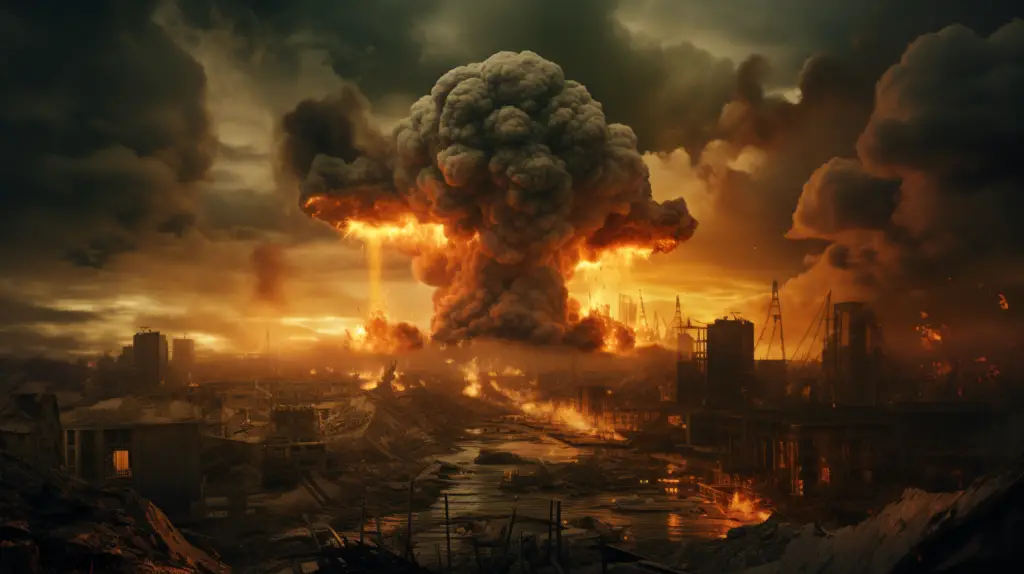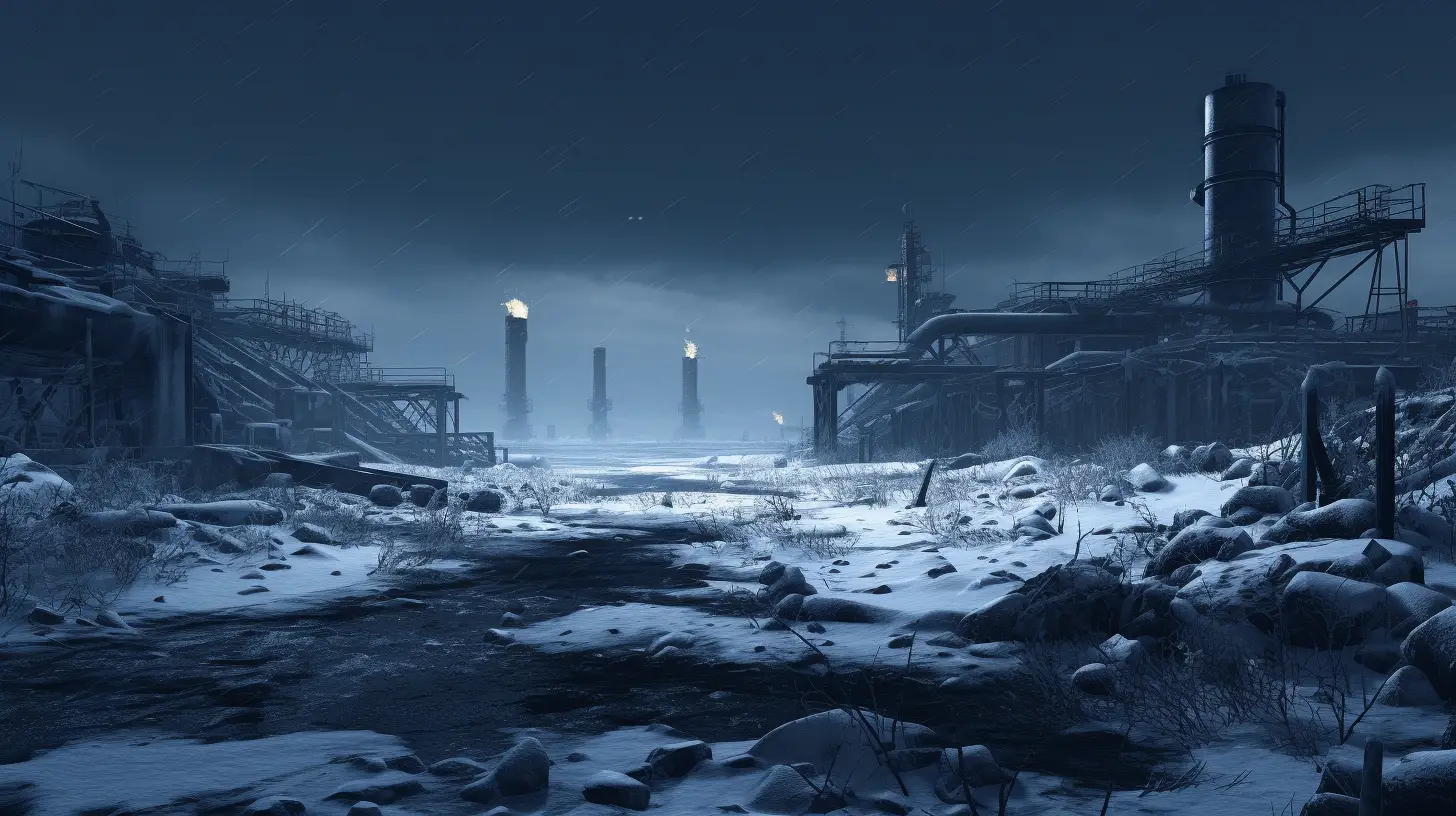Nuclear deterrence, a term that arose amid the cold winds of the Cold War era, represents a strategic security concept aimed at preventing an enemy from launching an attack by possessing a formidable counterattack potential. The cornerstone of this theory is the fear of mutually assured destruction (MAD), which proposes that the likelihood of a full-scale nuclear war would be so devastating that no rational actor would precipitate it. This concept has shaped international relations and security measures since its inception and continues to influence decision-making processes in today’s world.
In this article, we will delve into 25 interesting facts about this significant and, at times, controversial concept of “nuclear deterrance”.
- The doctrine of nuclear deterrence took root during the Cold War, a period of geopolitical tension between the Soviet Union and the United States after World War II.
- The basis of nuclear deterrence lies in game theory, a branch of mathematics that explores strategic interaction.
- Mutually Assured Destruction (MAD), an offshoot of nuclear deterrence, suggests that neither side will start a nuclear war knowing the result would be total annihilation.
- Thomas Schelling, an American economist and Nobel laureate, played a significant role in developing the theories underpinning nuclear deterrence.
- Nuclear deterrence does not just apply to nations but also deters non-state actors, such as terrorist groups, from attacking nuclear-armed states.
- The strategy of nuclear deterrence contributed to the arms race between the U.S. and the Soviet Union, leading to a significant build-up of nuclear arsenals.
- Nuclear deterrence led to the development of the ‘Triad’ system by superpowers, which involves land-launched nuclear missiles, nuclear-missile-armed submarines, and strategic aircraft with nuclear bombs and missiles.
- The Cuban Missile Crisis of 1962 is often cited as the most dangerous moment of nuclear deterrence, where the world came very close to nuclear war.
- The concept of nuclear deterrence extends beyond just military strategy and impacts diplomatic relations, international policy, and geopolitical alliances.
- The doctrine of nuclear deterrence was key in establishing the North Atlantic Treaty Organization (NATO) and the Warsaw Pact.
READ MORE: 25 Interesting Facts About the “Nuclear Winter” Theory - The Treaty on the Non-Proliferation of Nuclear Weapons (NPT) of 1968 recognized the concept of nuclear deterrence implicitly.
- Critics of nuclear deterrence argue that it encourages nuclear proliferation as more countries seek nuclear weapons to deter others.
- Nuclear deterrence relies heavily on communication and perceived intentions. The failure of any can lead to catastrophic outcomes.
- Despite the end of the Cold War, the concept of nuclear deterrence remains relevant, especially in the context of countries like North Korea and Iran.
- The credibility of nuclear deterrence depends on the capability to launch, the resolve to do so, and effective communication of this to potential adversaries.
- In 1991, the U.S. and Soviet Union signed the START I treaty, agreeing to reduce their nuclear warheads significantly, yet maintaining enough for deterrence.
- ‘Nuclear Umbrella’ is a term used to describe a situation where a nuclear state uses its arsenal to protect a non-nuclear state, thus extending its deterrence.
- A modern development, ‘Cyber deterrence,’ is gaining traction. It is an analogy to nuclear deterrence but in the realm of cyber warfare.
- One criticism of nuclear deterrence is its lack of relevance to accidental launches or unauthorized use of nuclear weapons.
READ MORE: 25 Interesting Facts About “Hibakusha”: Survivors of the Atomic Bombings - Nuclear deterrence has also given birth to concepts like ‘First Strike Advantage,’ where a state aims to disable an adversary’s nuclear forces before they can retaliate.
- France and the United Kingdom developed their nuclear arsenals in the Cold War, influenced by the deterrence theory.
- The 1999 Kargil War between India and Pakistan highlighted nuclear deterrence’s role in regional conflicts.
- Notable events such as the Chernobyl and Fukushima nuclear disasters have affected perceptions of nuclear deterrence and its risks.
- The concept of nuclear deterrence has dramatically shaped pop culture, inspiring many films, books, and video games depicting post-apocalyptic scenarios.
- Despite growing movements for global nuclear disarmament, nuclear deterrence continues to be an integral part of the security strategy for several countries.
READ MORE: 50 Interesting Facts About the Atomic Bomb You Need to Know and Understand
Nuclear deterrence, a complex and intricate concept born out of a period of high tension and rivalry, has undeniably left a profound impact on the course of history and the structure of international relations. Despite the controversies and risks associated with it, the doctrine of nuclear deterrence continues to resonate in the strategies and policies of nations worldwide. The fact remains that as long as nuclear weapons exist, the shadow of nuclear deterrence will continue to loom over global geopolitics.



